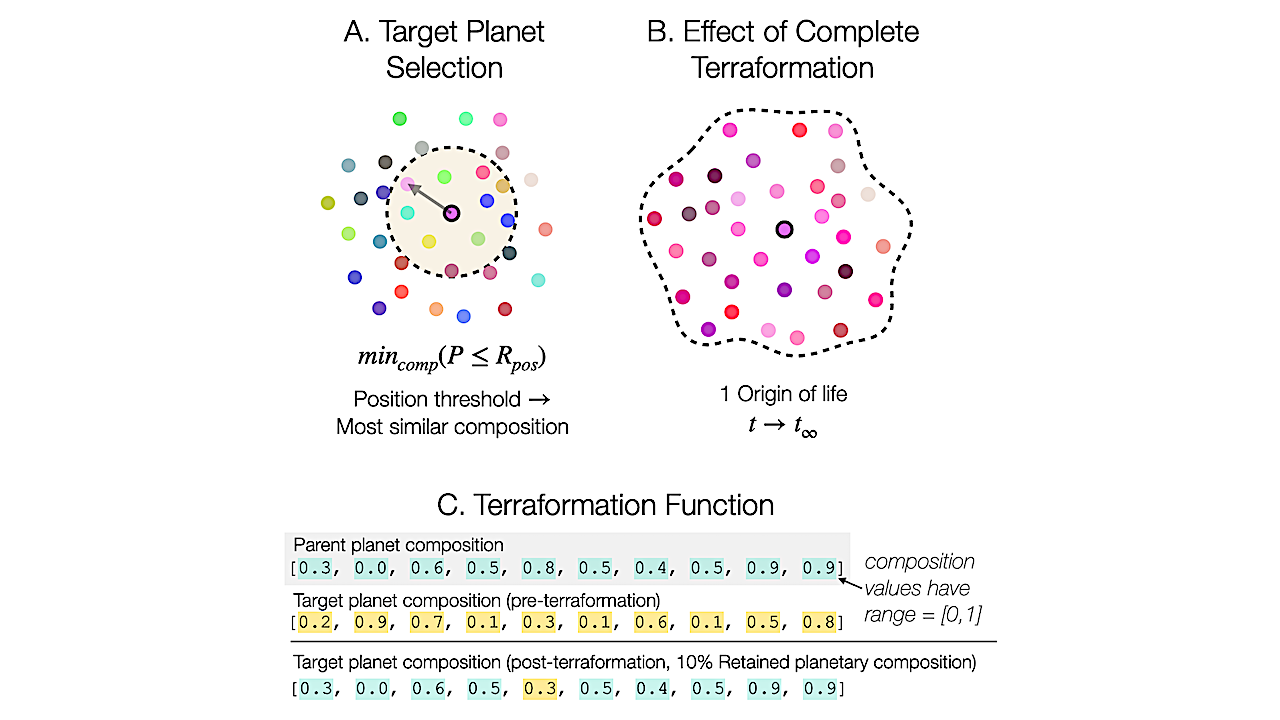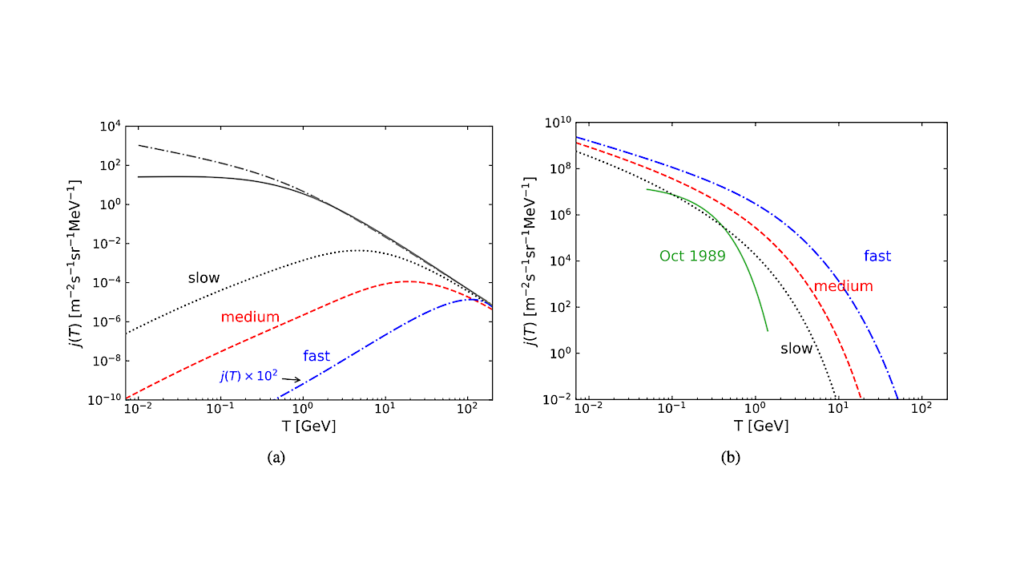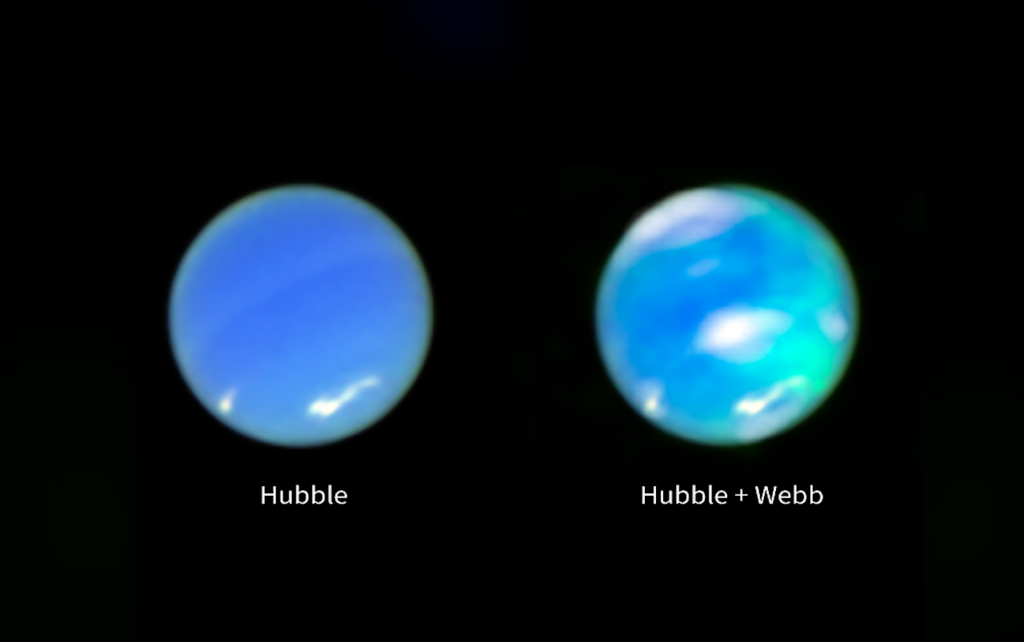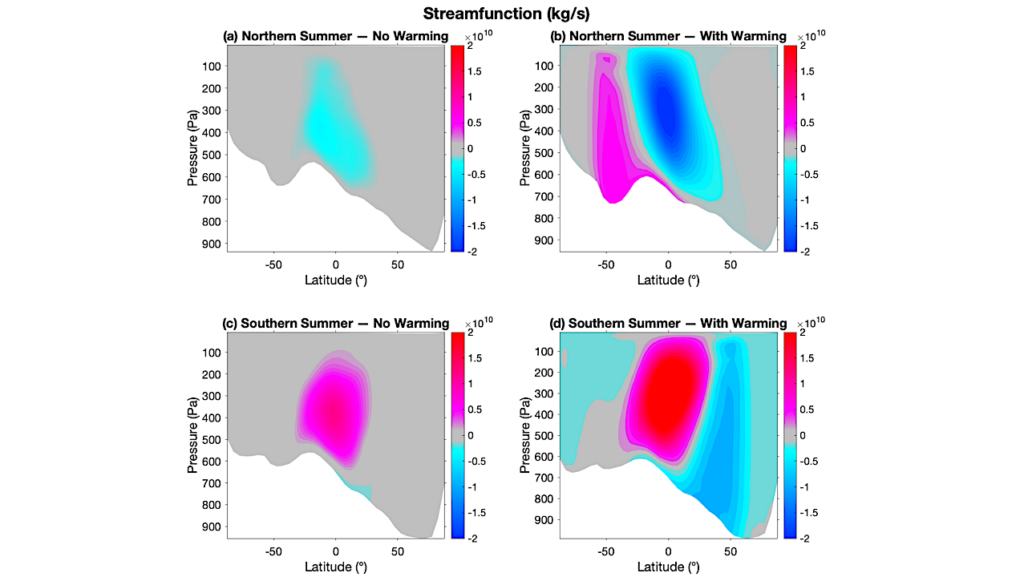An Agnostic Biosignature Based on Modeling Panspermia and Terraformation

A fundamental goal of astrobiology is to detect life outside of Earth. This proves to be an exceptional challenge outside of our solar system, where strong assumptions must be made about how life would manifest and interact with its planet.
Such assumptions are required because of the lack of a consensus theory of living systems, or an understanding of the possible extent of planetary dynamics. Here we explore a model of life spreading between planetary systems via panspermia and terraformation. Our model shows that as life propagates across the galaxy, correlations emerge between planetary characteristics and location, and can function as a population-scale agnostic biosignature.
This biosignature is agnostic because it is independent of strong assumptions about any particular instantiation of life or planetary characteristic–by focusing on a specific hypothesis of what life may do, rather than what life may be. By clustering planets based on their observed characteristics, and examining the spatial extent of these clusters, we demonstrate (and evaluate) a way to prioritize specific planets for further observation–based on their potential for containing life.
We consider obstacles that must be overcome to practically implement our approach, including identifying specific ways in which better understanding astrophysical and planetary processes would improve our ability to detect life. Finally, we consider how this model leads us to think in novel ways about hierarchies of life and planetary scale replication.
Harrison B. Smith, Lana Sinapayen
Comments: 16 pages, 20 figures
Subjects: Earth and Planetary Astrophysics (astro-ph.EP); Instrumentation and Methods for Astrophysics (astro-ph.IM); Populations and Evolution (q-bio.PE); Quantitative Methods (q-bio.QM)
Cite as: arXiv:2403.14195 [astro-ph.EP] (or arXiv:2403.14195v1 [astro-ph.EP] for this version)
Submission history
From: Harrison Smith
[v1] Thu, 21 Mar 2024 07:42:07 UTC (1,394 KB)
https://arxiv.org/abs/2403.14195
Astrobiology,








